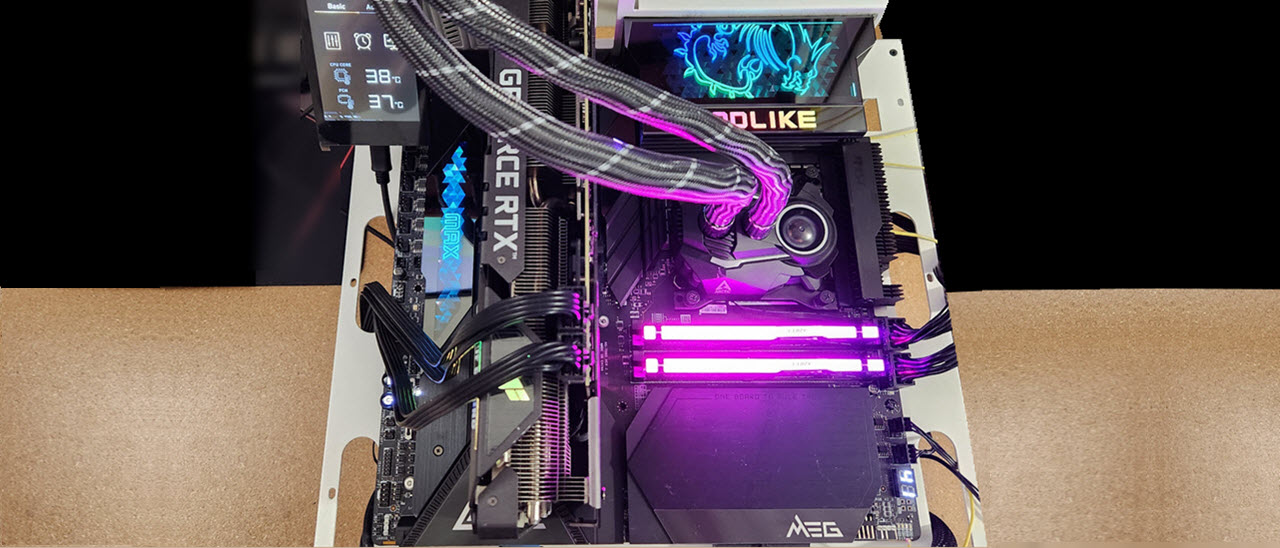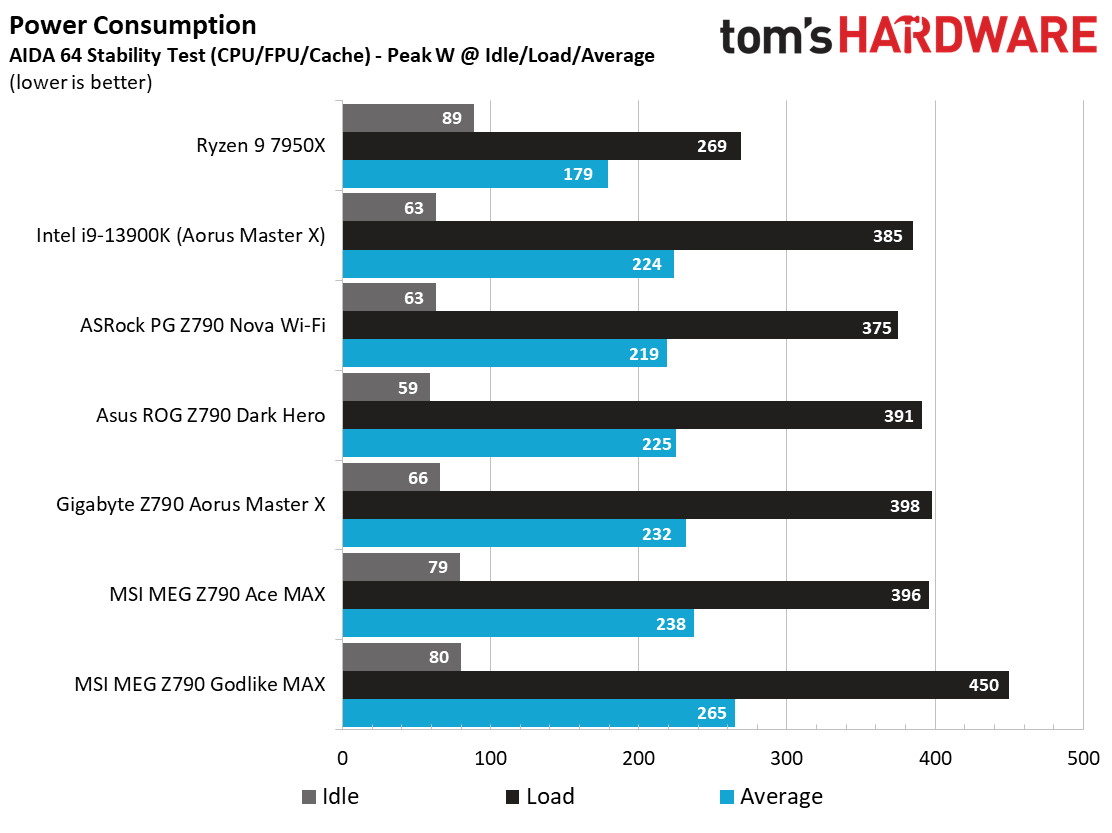Why you can trust Tom's Hardware
Our standard benchmarks and power tests are performed using the CPU’s stock frequencies (including any default boost/turbo), with all power-saving features enabled. We set optimized defaults in the BIOS and the memory by enabling the XMP profile. The Windows power scheme is set to Balanced (default) for this baseline testing so the PC idles appropriately.
Synthetic Benchmarks
Synthetics provide a great way to determine how a board runs, as identical settings should produce similar performance results. Turbo boost wattage and advanced memory timings are places where motherboard makers can still optimize for stability or performance, though, and those settings can impact some testing.

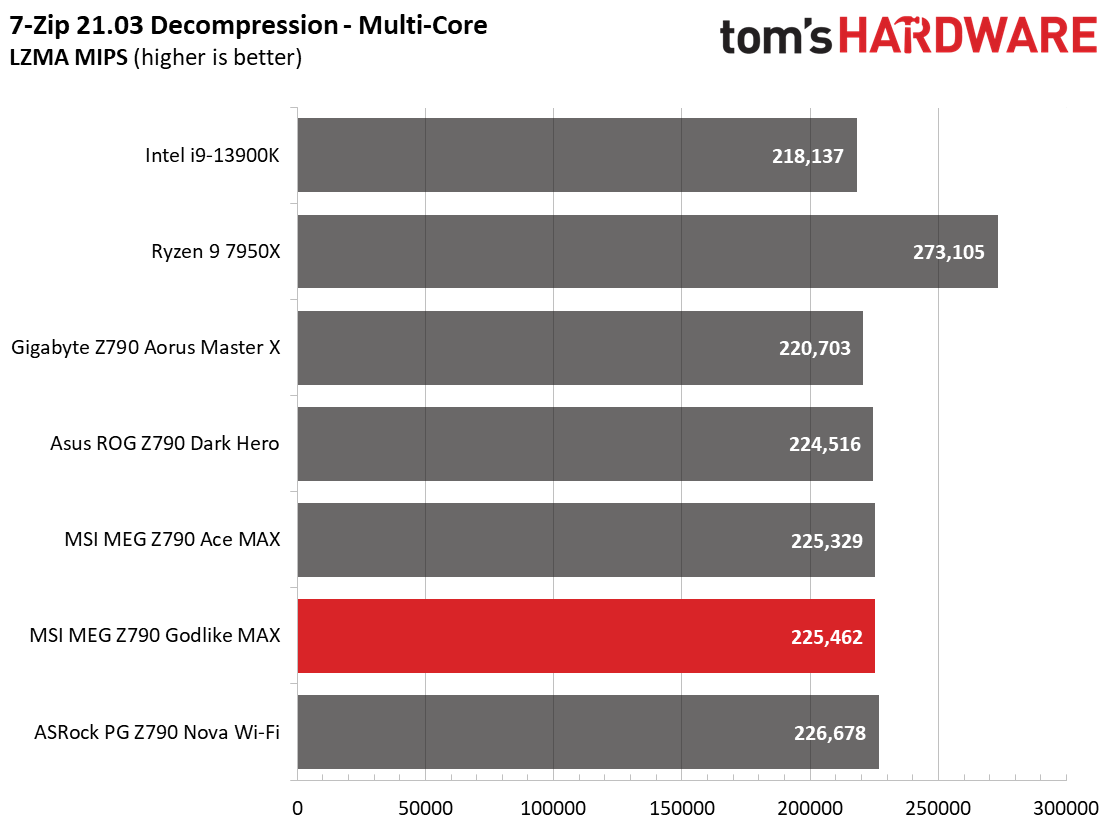
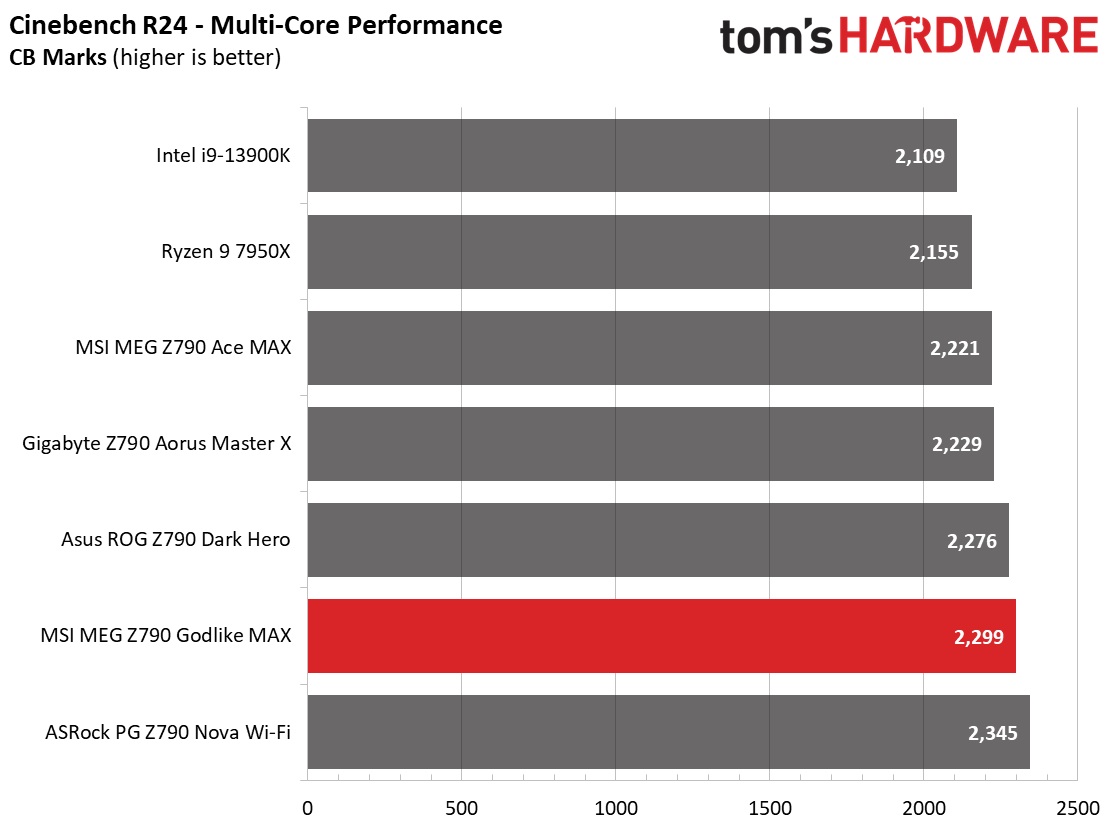
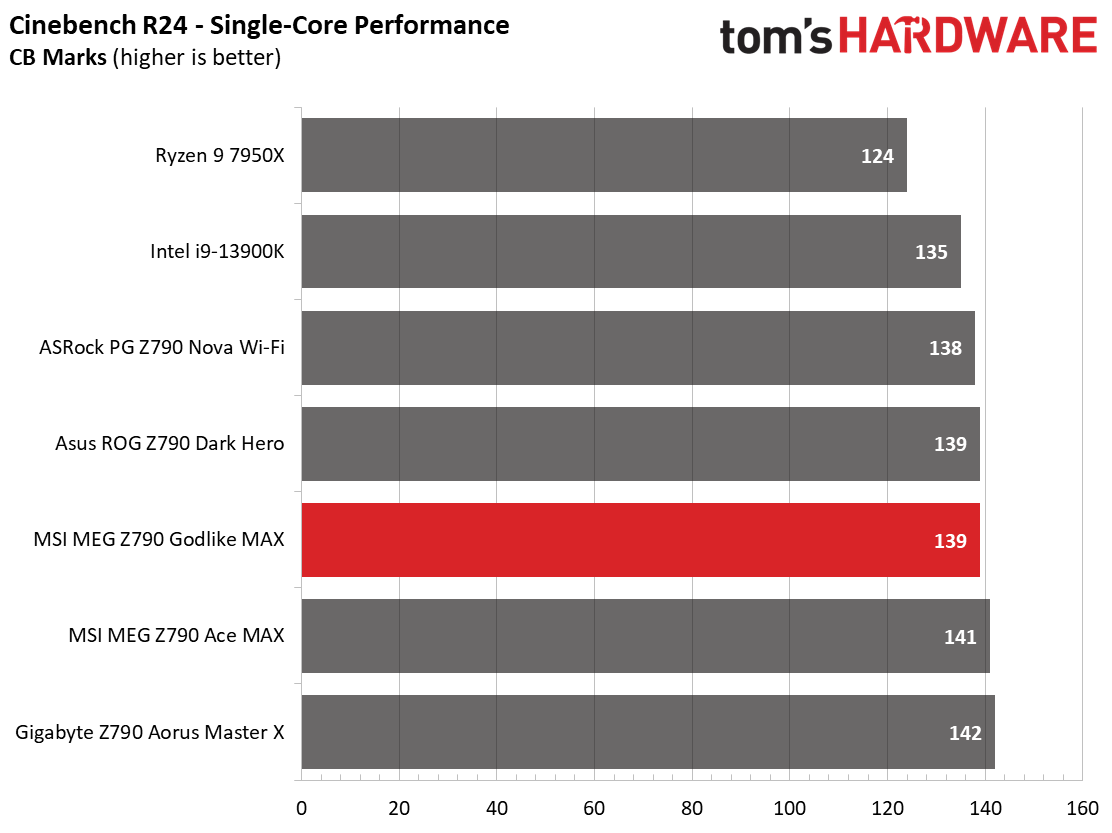
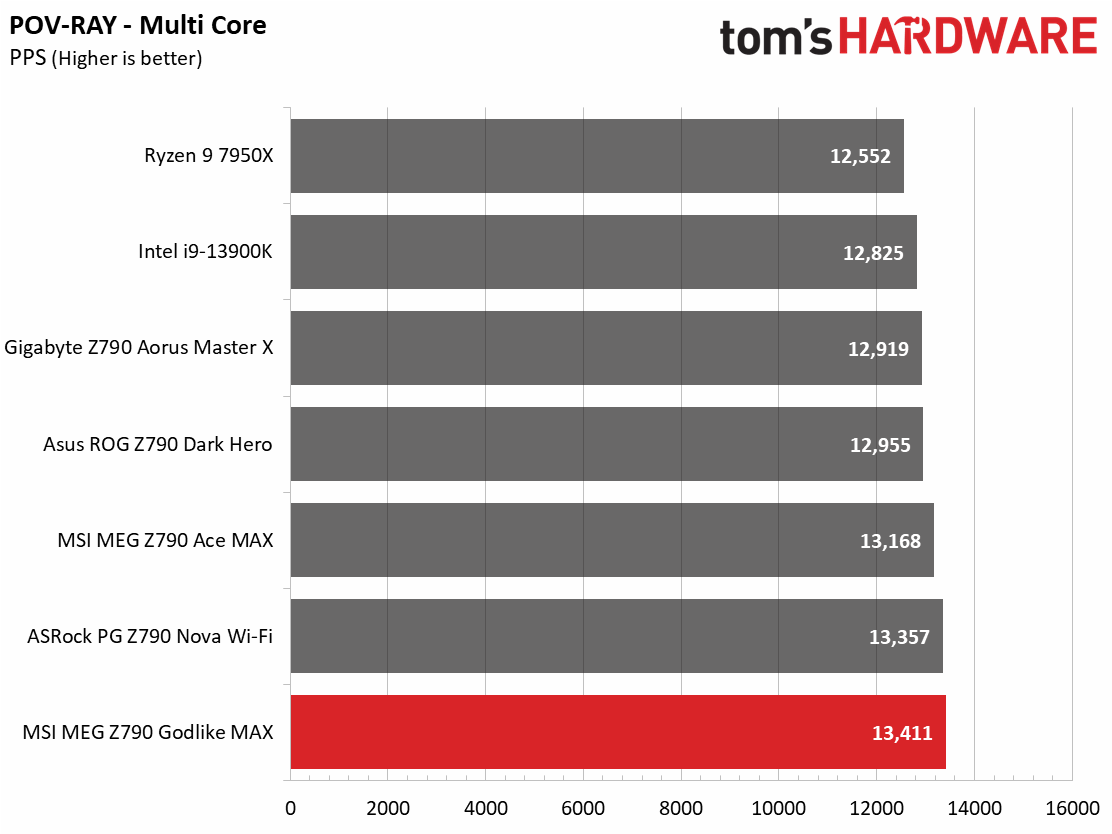
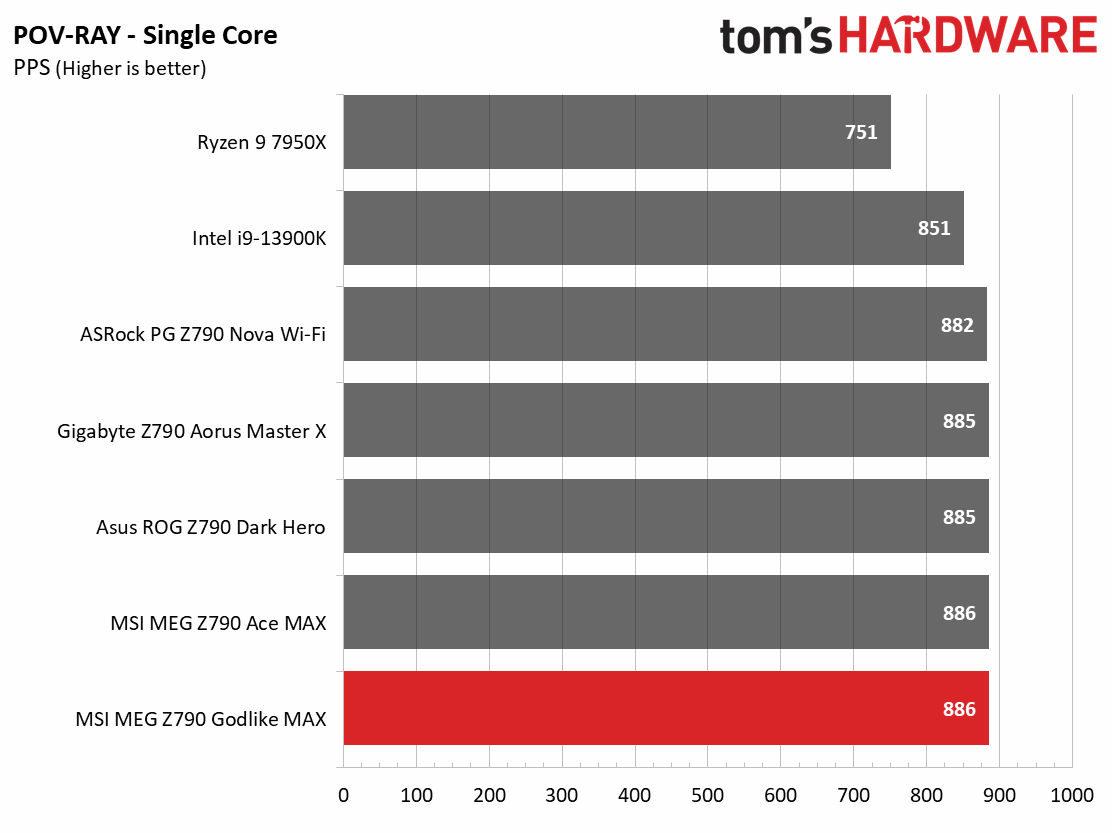
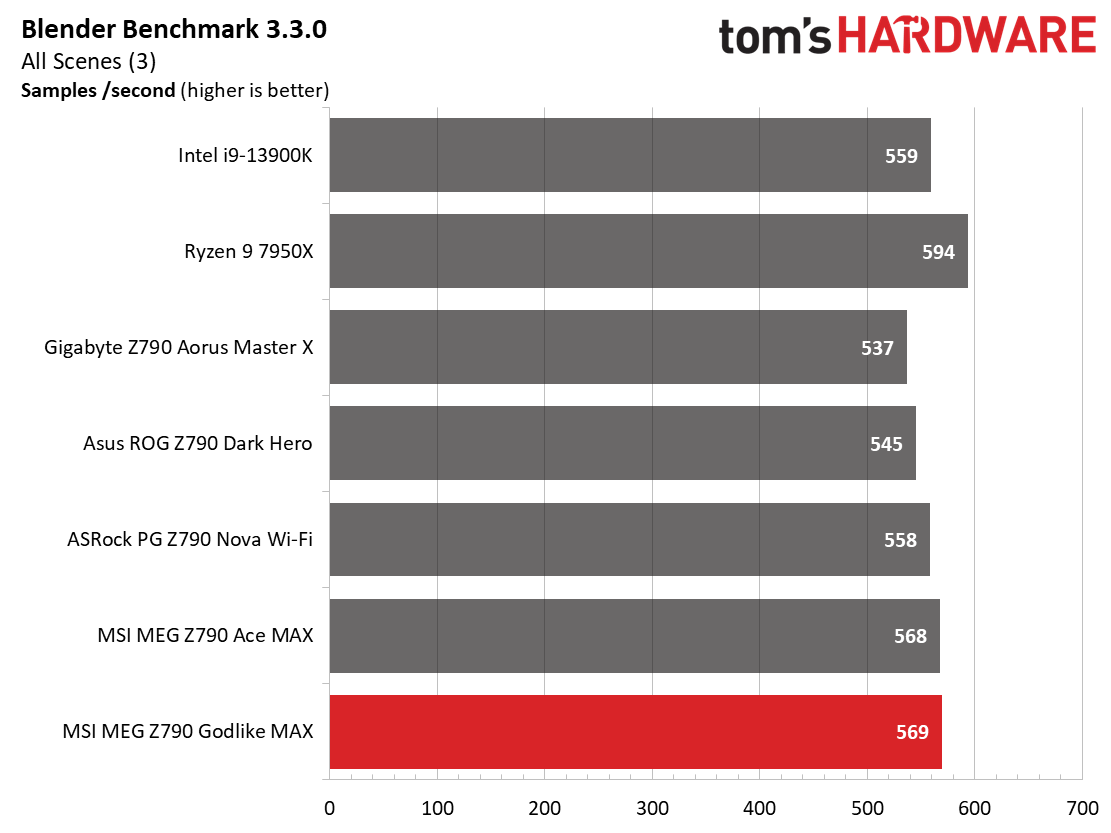
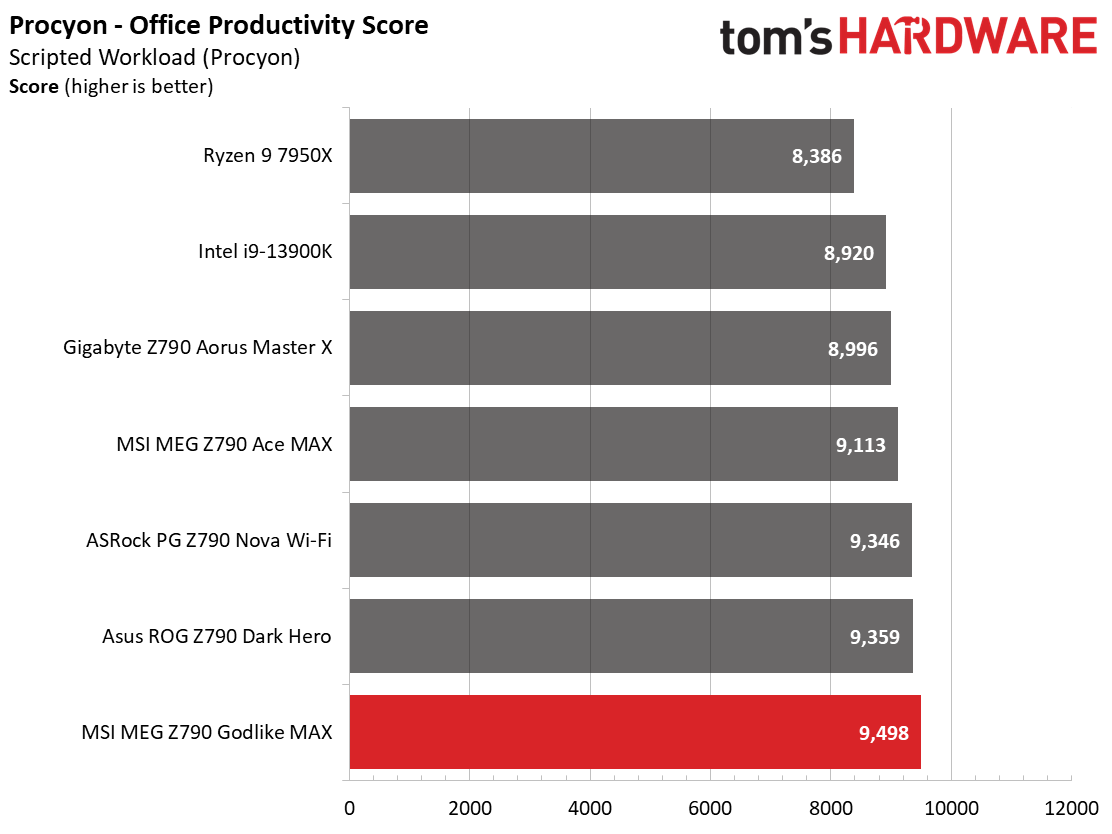
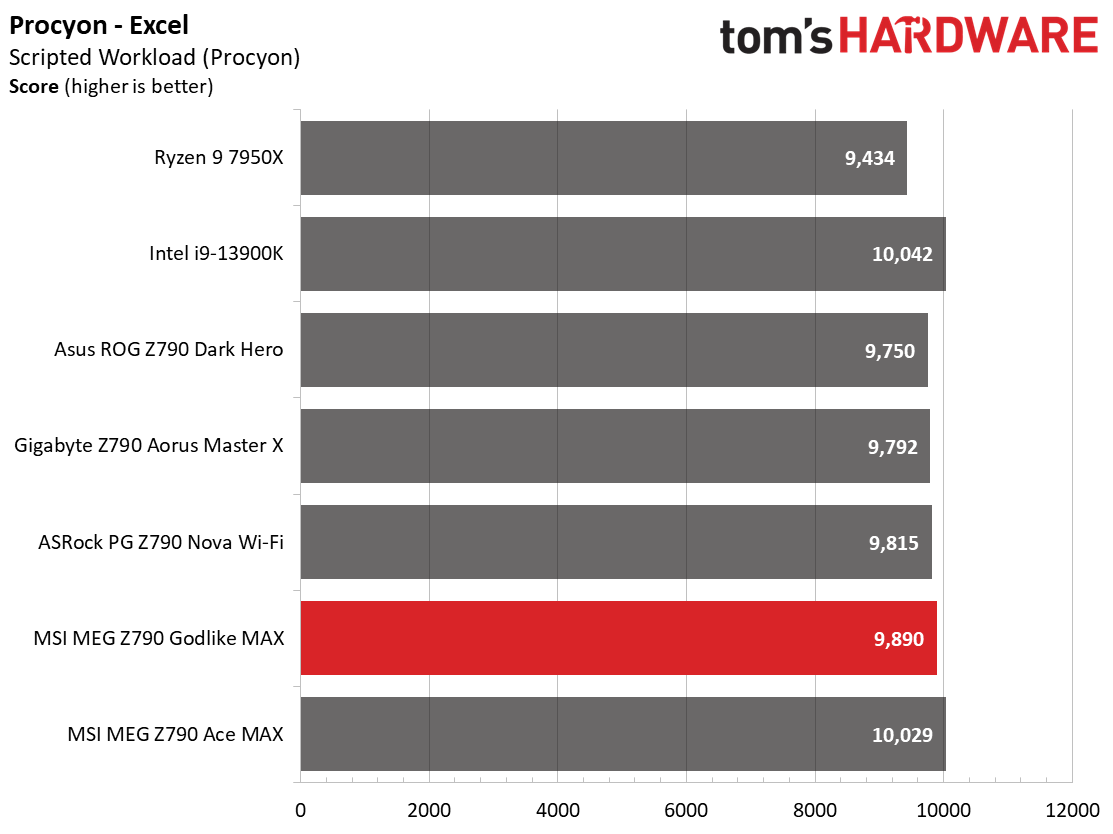
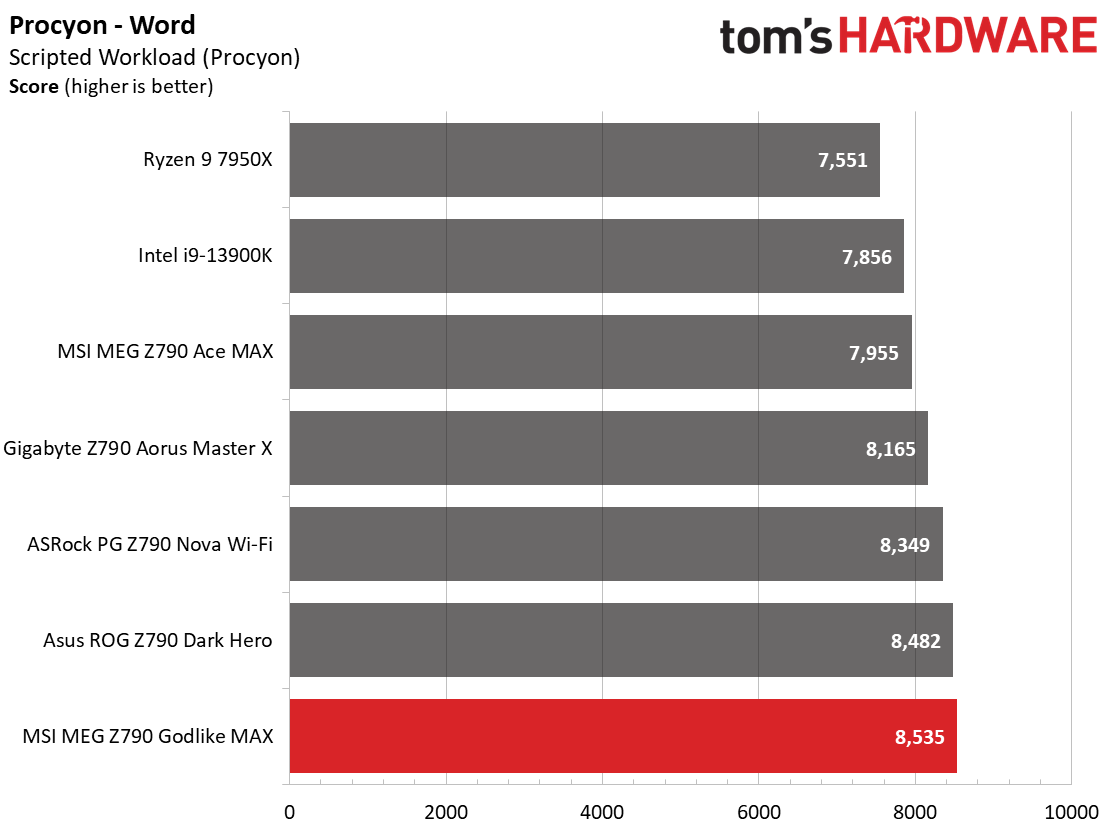
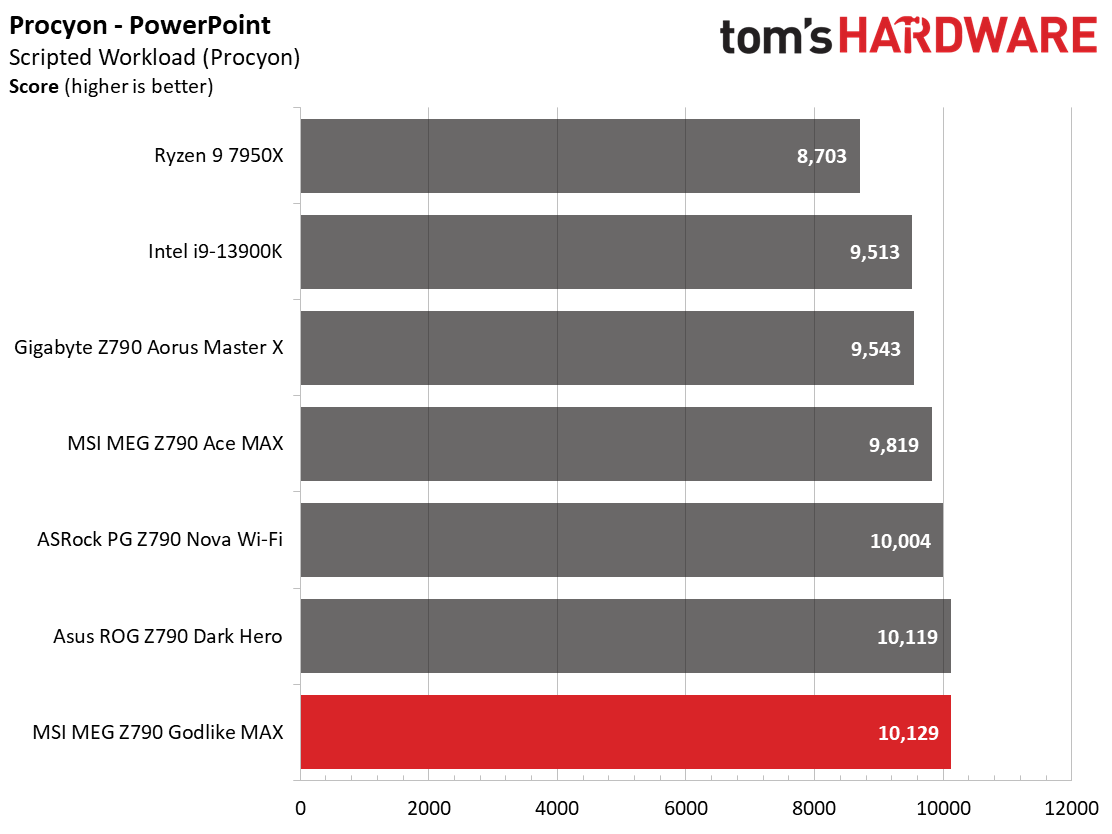
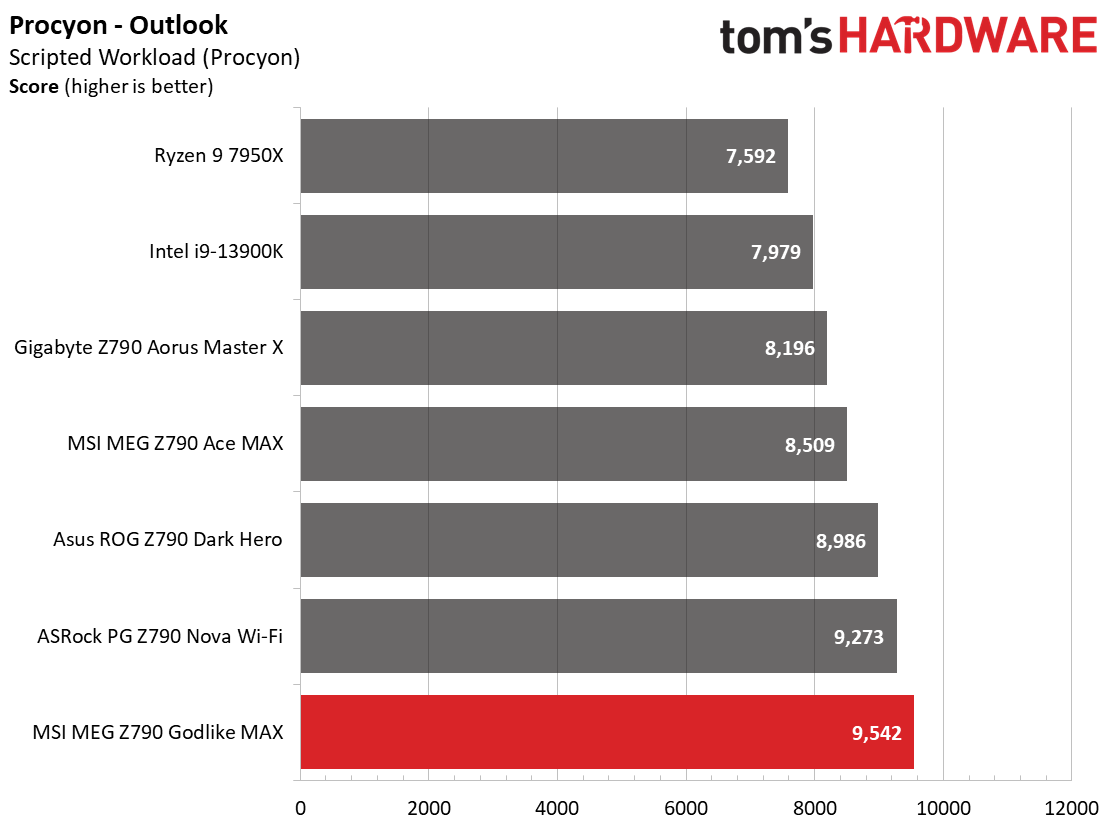
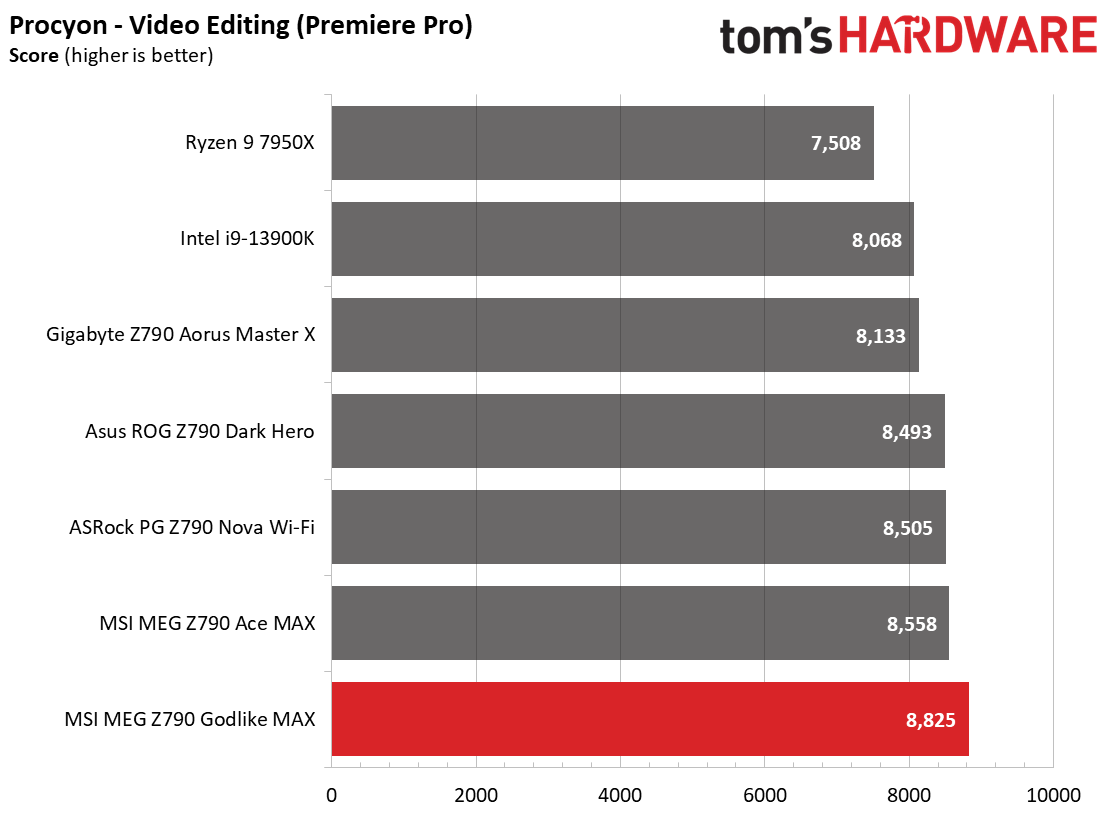
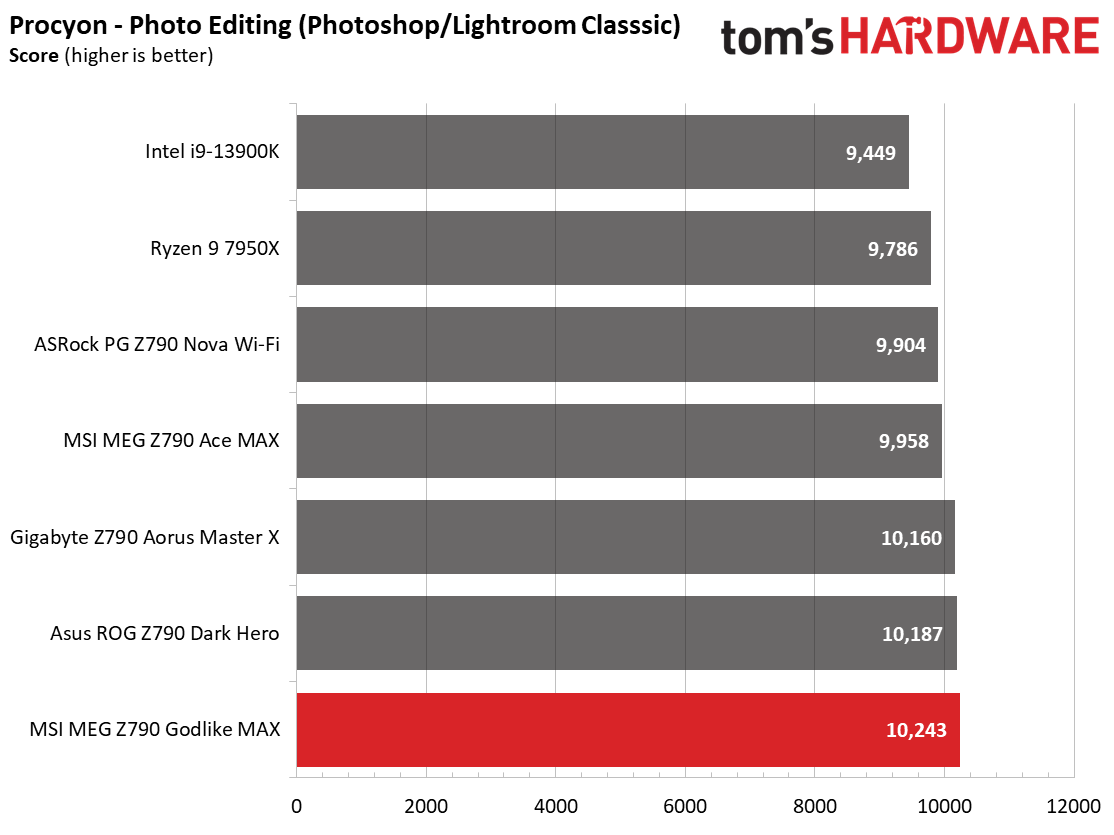
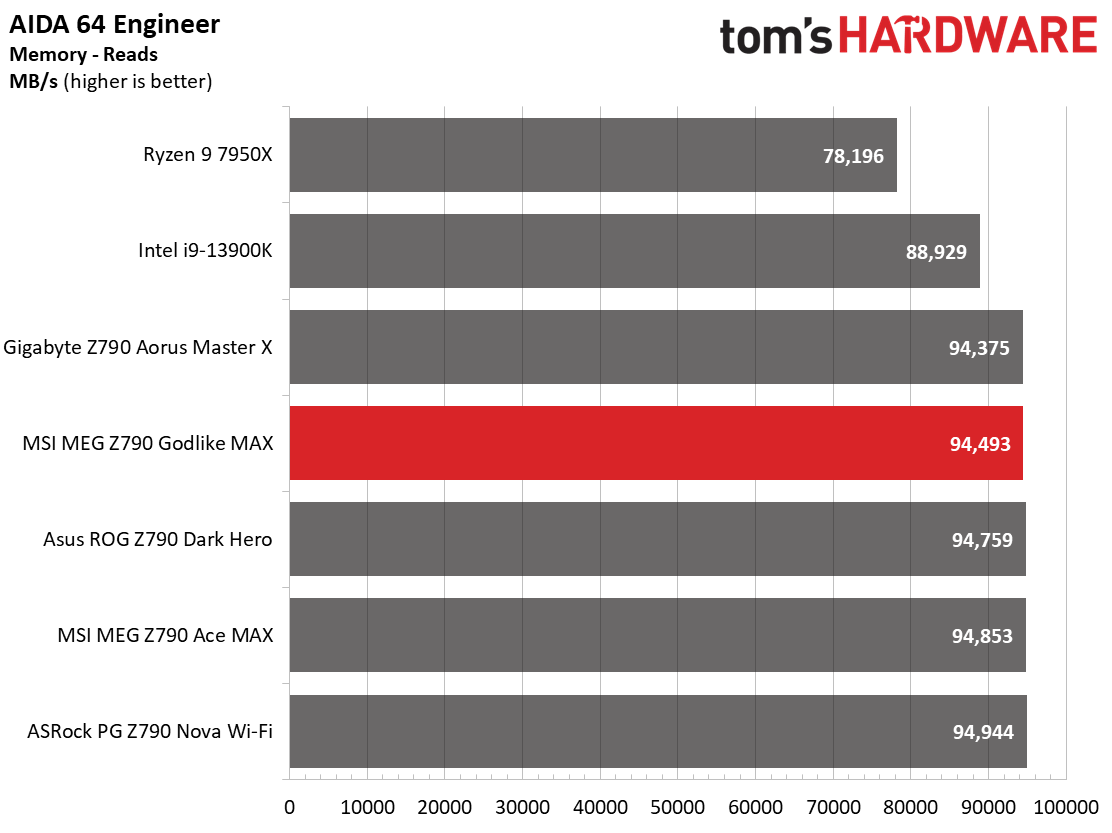
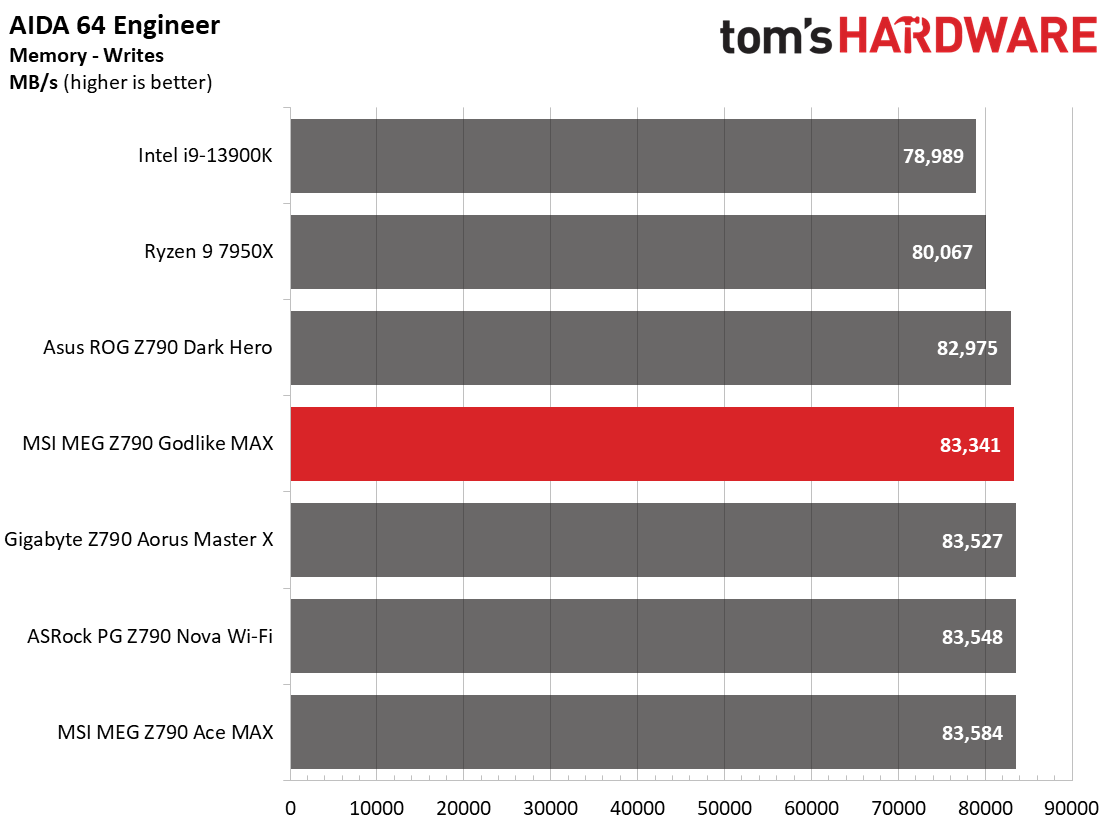
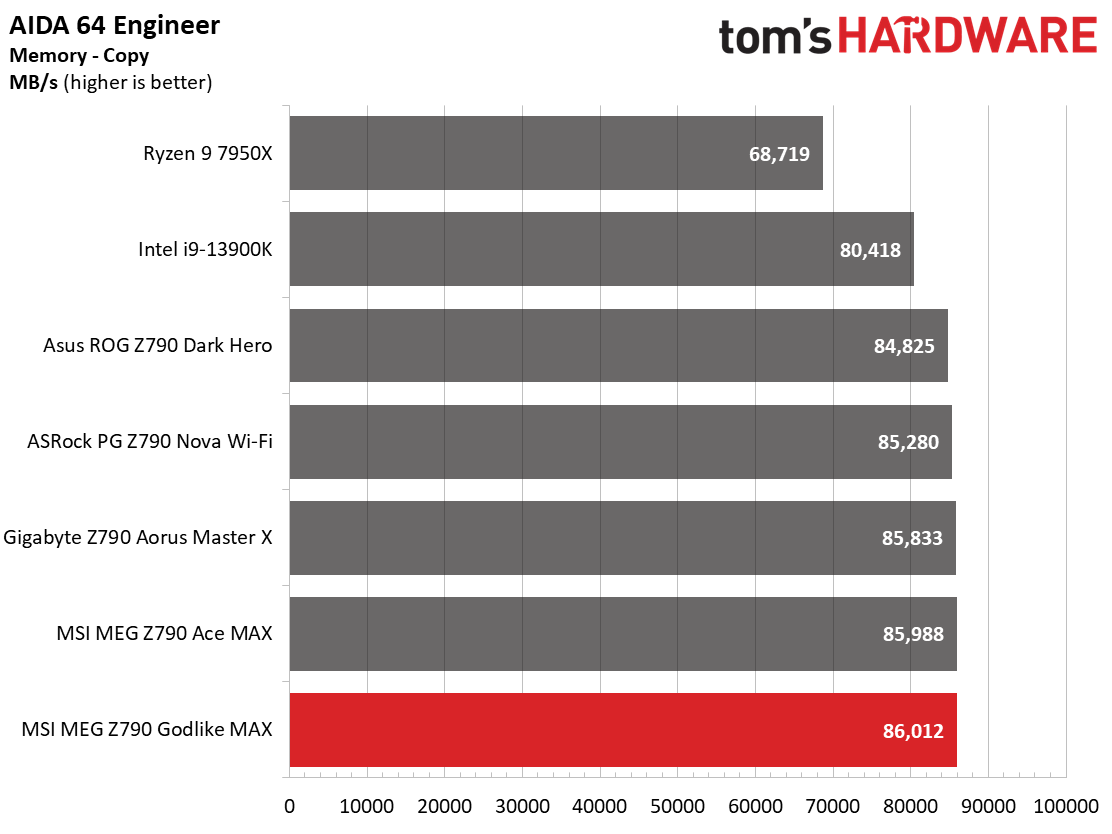
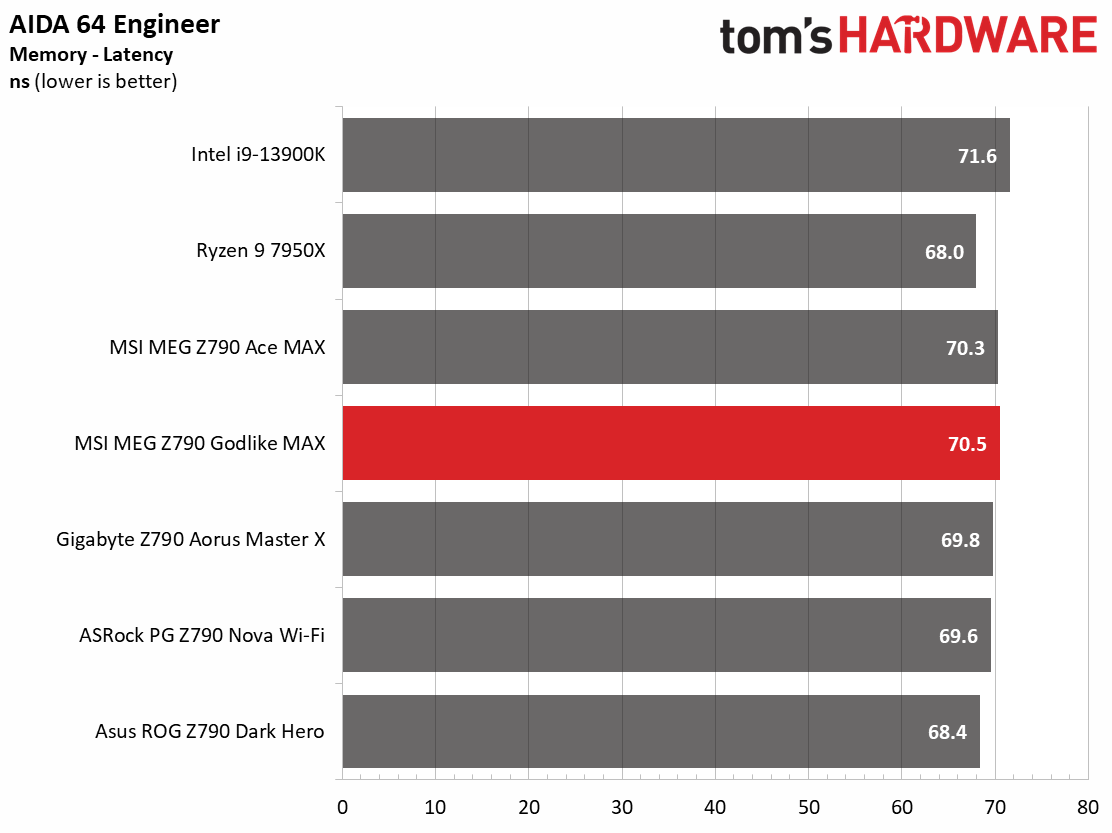
Overall performance in the synthetic benchmarks was the next we’ve seen in our refresh testing. The difference isn’t big, but you can plainly see from the charts the unlocked performance (and a good mount on our AIO) is on top or towards the top of the results. On any board configured this way, performance is limited by the CPU temperature and keeping it from throttling.
Timed Applications
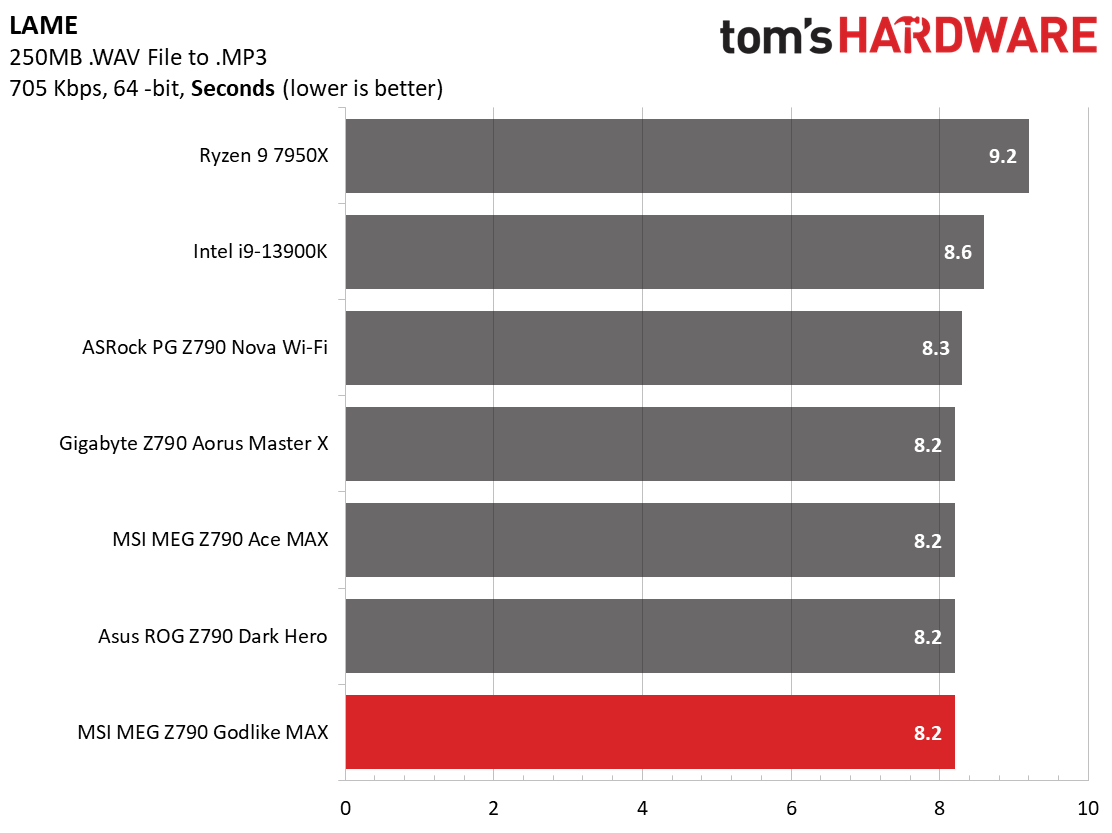
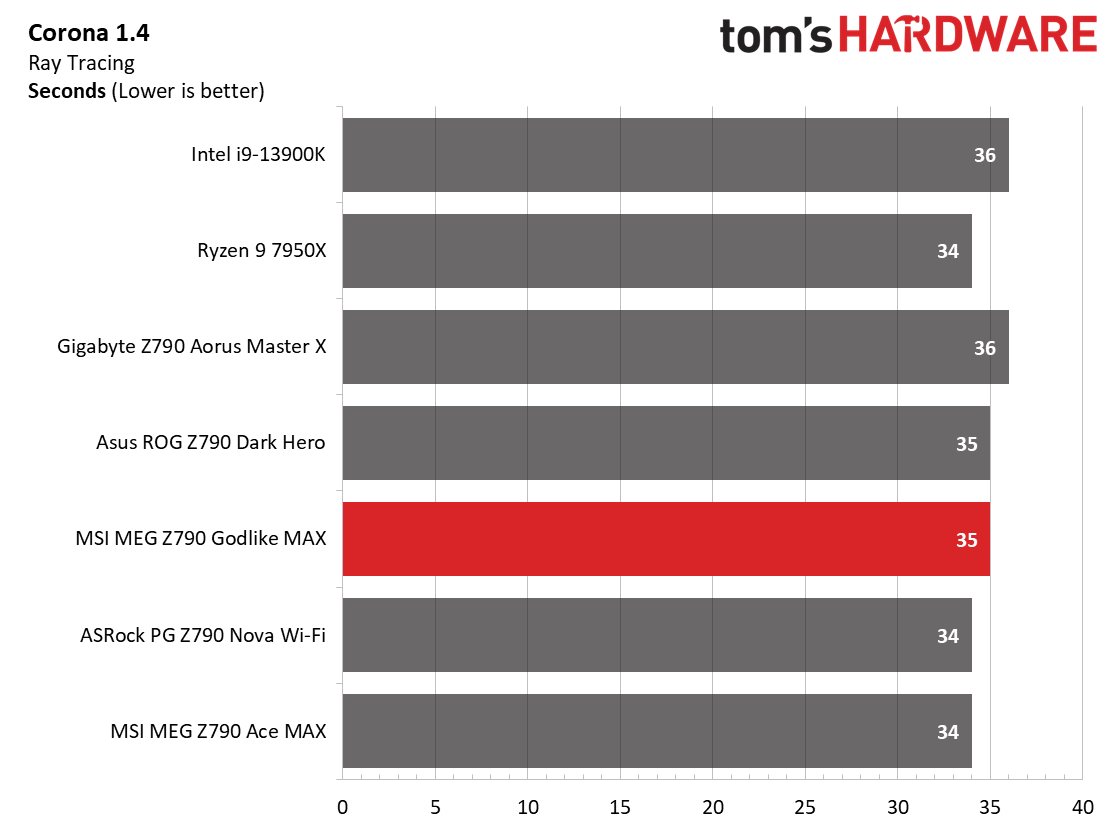
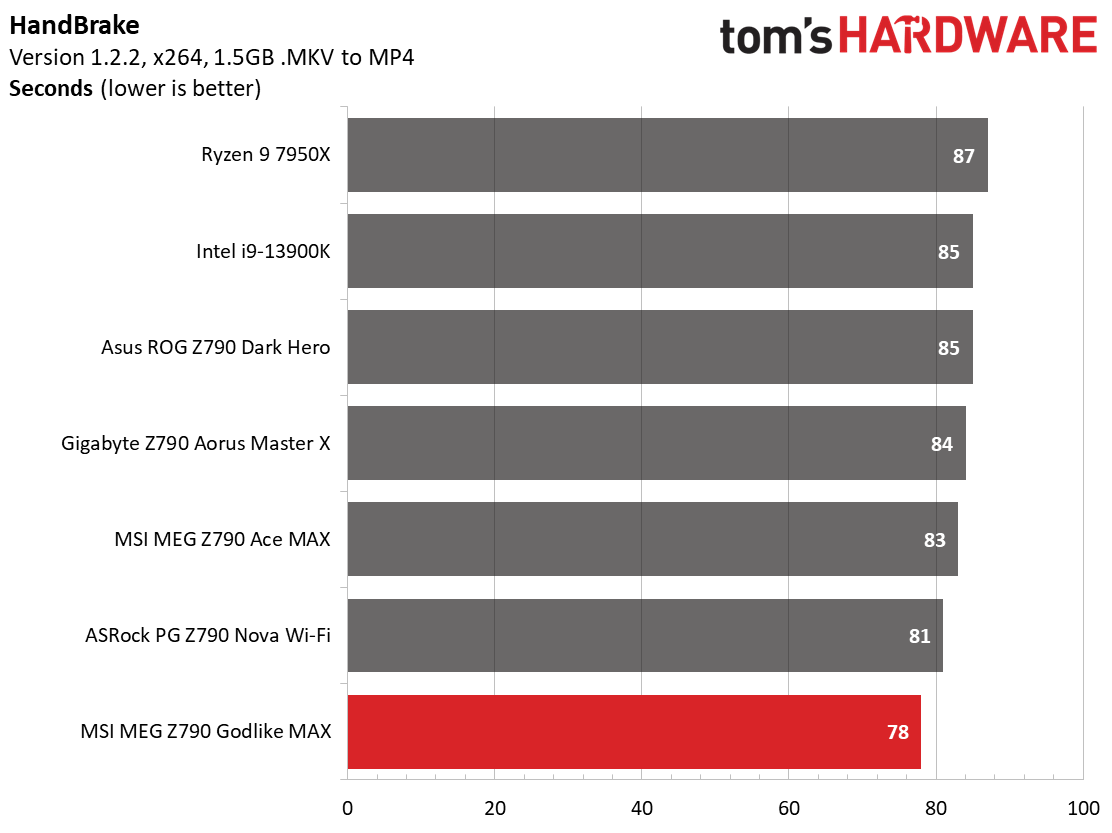
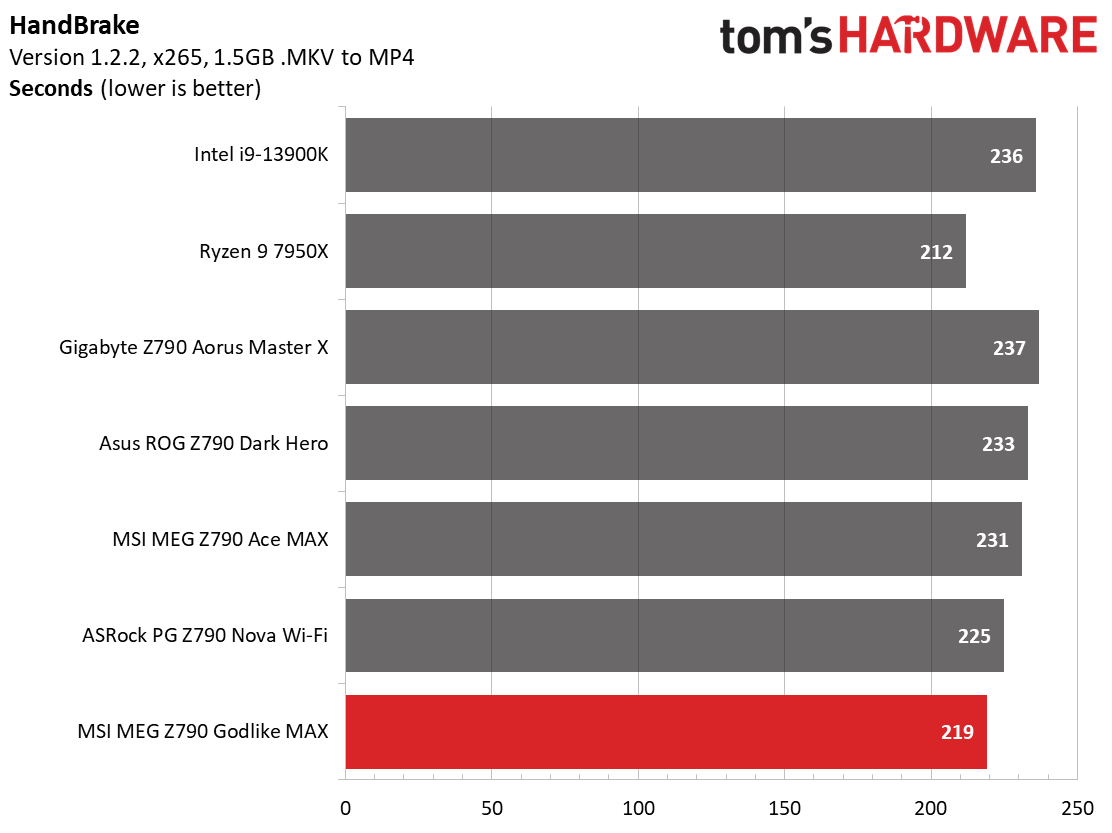
In our timed applications, the Nova did well in Handbrake and Corona, matching or surpassing the other boards. It was at the bottom of the LAME results. However, the difference between our refresh boards and the 14900K was one-tenth of a second, or just a bit above a 1% difference (nearly negligible). Between our timed and synthetic benchmarks, the Nova was one of the top performers thus far.
3D Games and 3DMark
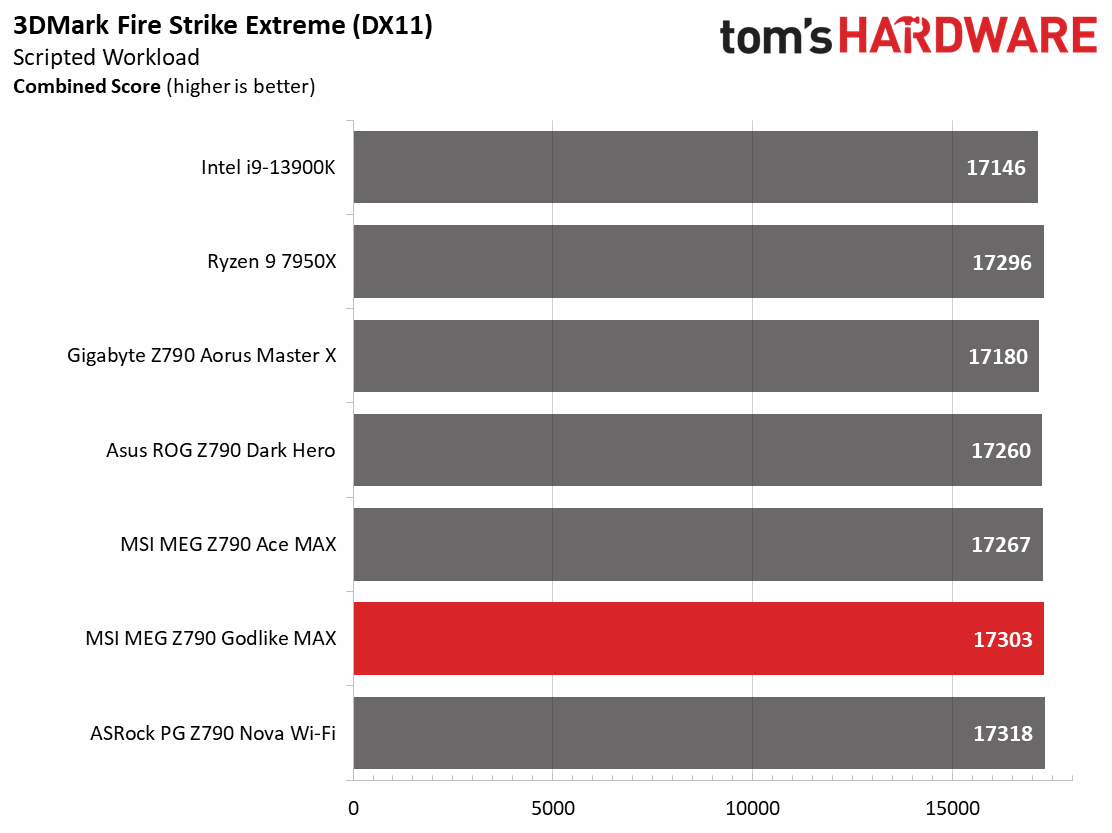
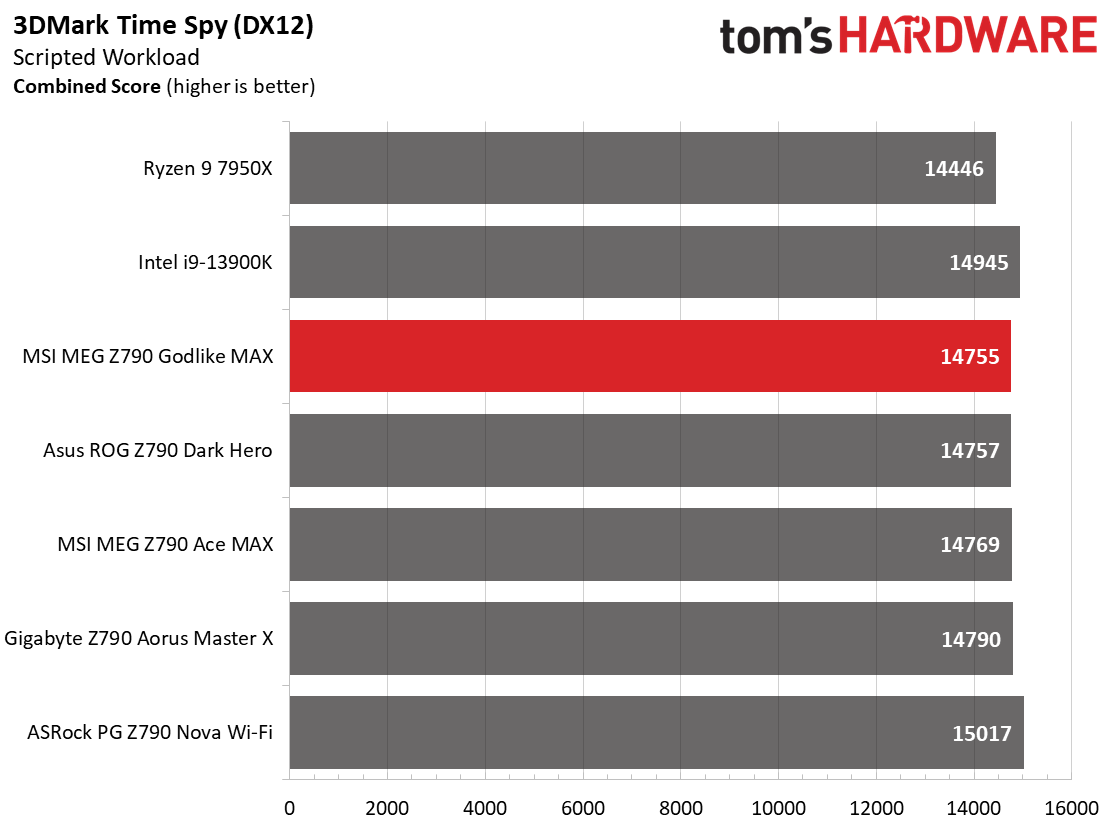
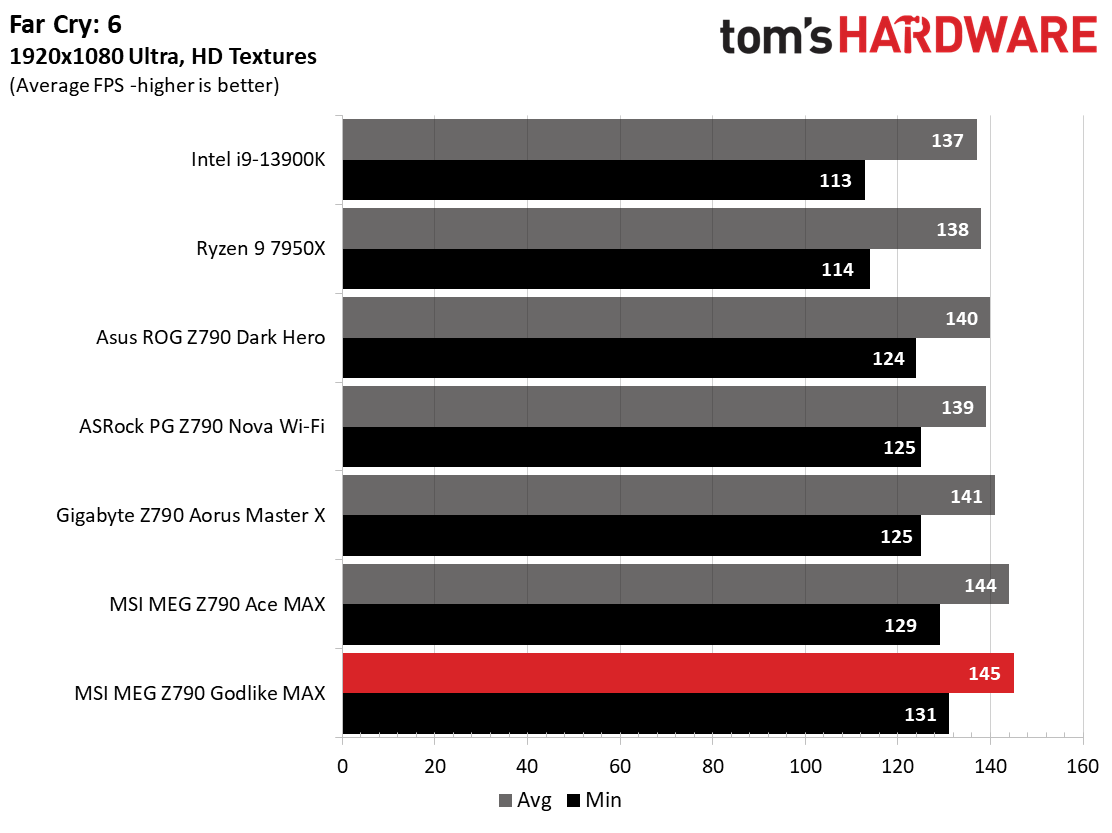
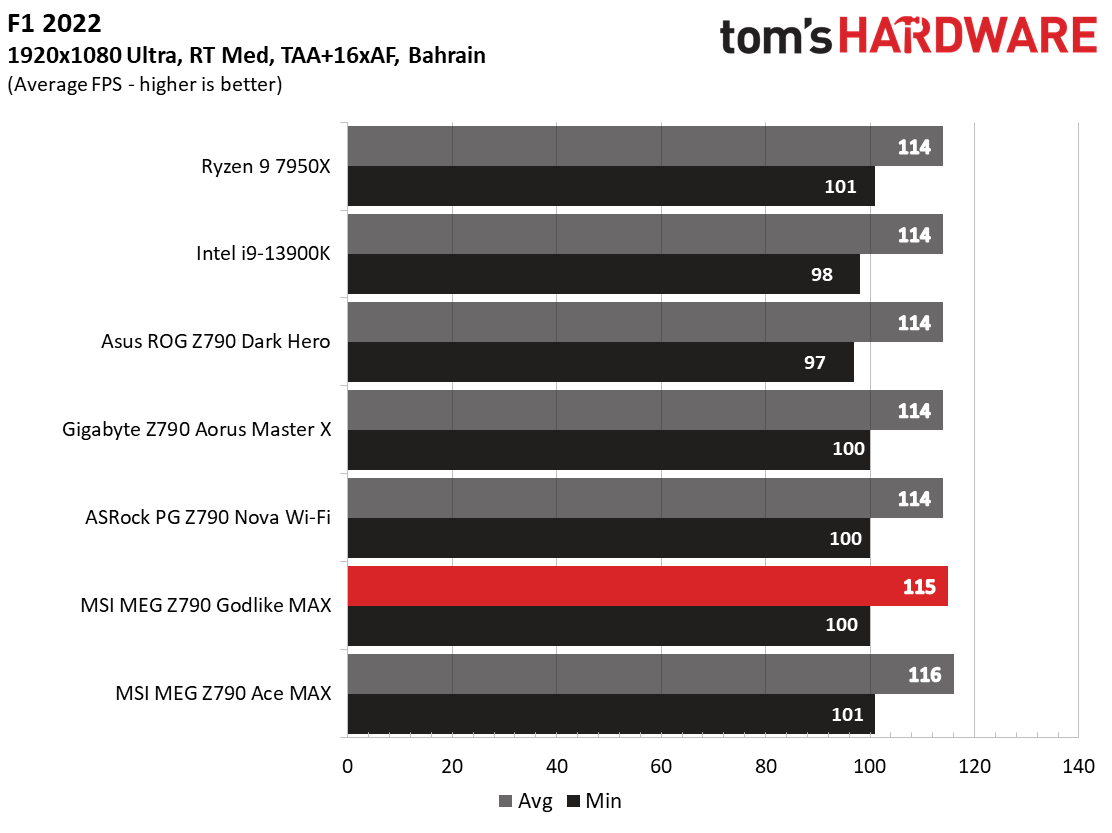
Starting with the launch of Zen 4, we shifted our test games from F1 21 to F1 22 while keeping Far Cry 6. We run the games at 1920x1080 resolution using the Ultra preset (details listed above). As the resolution goes up, the CPU tends to have less impact. The goal with these settings is to determine if there are differences in performance at the most commonly used (and CPU/system bound) resolution with settings most people use or strive for (Ultra). We expect the difference between boards in these tests to be minor, with most falling within the margin of error differences. We’ve also added a minimum FPS value, which can affect your gameplay and immersion experience.
The Z790 Godlike was also average to above average in the gaming tests. The 3DMark results were slightly inconsistent, but the actual game results were towards the top. It is competent not only in productivity-type tasks but also in games.
Overclocking
Generation after generation, overclocking headroom has been shrinking with both Intel and AMD processors, with motherboard partners pushing the limits to set themselves apart from the plethora of options available to the consumer. With the overclocking headroom all but gone, we’ve left things at stock for cores but will push the Integrated Memory Controller (IMC) for faster RAM. Remember, for 14th-gen CPUs, the maximum stock spec for memory is DDR5-6000 versus DDR5-5600 for 13th-gen. We have a DDR5-7200 kit and a DDR5-8000 kit in-house to test the higher speeds.
Get Tom's Hardware's best news and in-depth reviews, straight to your inbox.
Using the latest BIOS at the time of writing (E7D85IMS.A10 - from 10/27), the only memory kit we could get to work was our DDR5-6000 kit. The other two kits weren’t on the QVL list, but we tried anyway. Both kits failed stress testing. We tried to add System Agent and even voltage for the RAM, but we couldn’t get either kit to pass our 30-minute stress test. Our best advice here is to stick to the QVL list for compatibility.
Power Consumption / VRM Temperatures
We used AIDA64’s System Stability Test with Stress CPU, FPU, Cache, and Memory enabled for power testing, using the peak power consumption value. The wattage reading is from the wall via a Kill-A-Watt meter to capture the entire PC (minus the monitor). The only variable that changes is the motherboard; all other parts remain the same. Please note we moved to using only the stock power use/VRM temperature charts. Since the system uses every available degree Celsius, unless you’re using a sub-ambient cooling solution, you’ll use more power and generate more heat using default settings.
Idle power use on the flagship Z790 Godlike MAX is higher than others, as many would expect. Idle power use sits around 80W at the wall, while the load wattage peaked at 450W, over 50W higher than its little brother (Z790 Ace MAX) and other tested boards (idle wattage is similar). If you want to be efficient, flagship-type boards like our Godlike with more features/items that use power aren’t the way. However, the difference in gaming (versus full-load work) isn’t as significant.
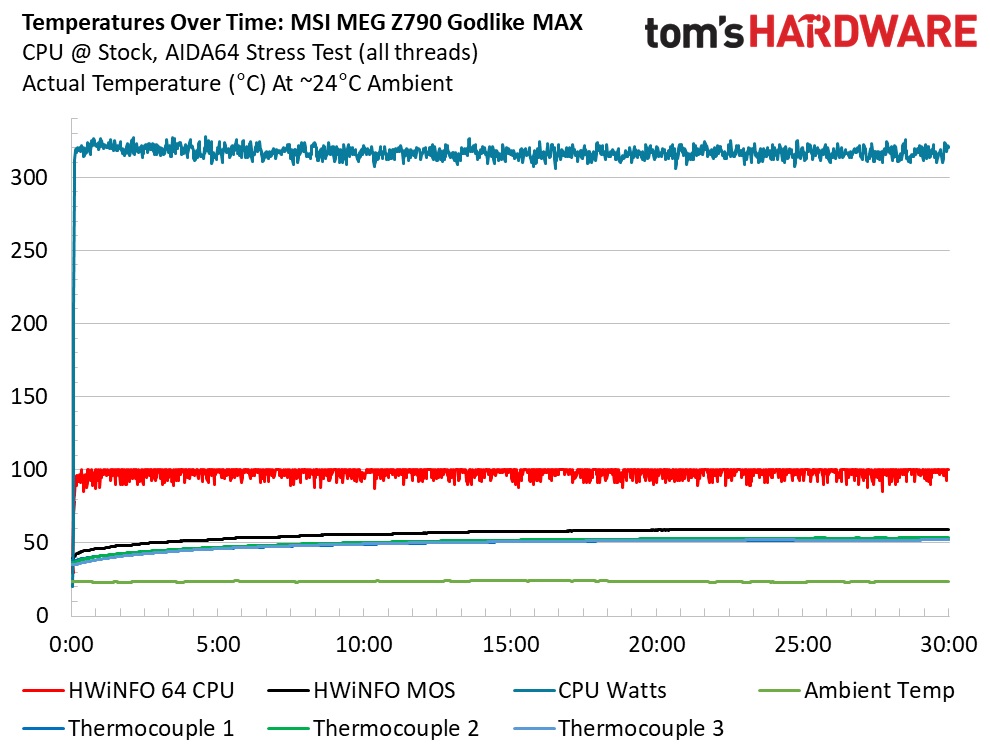
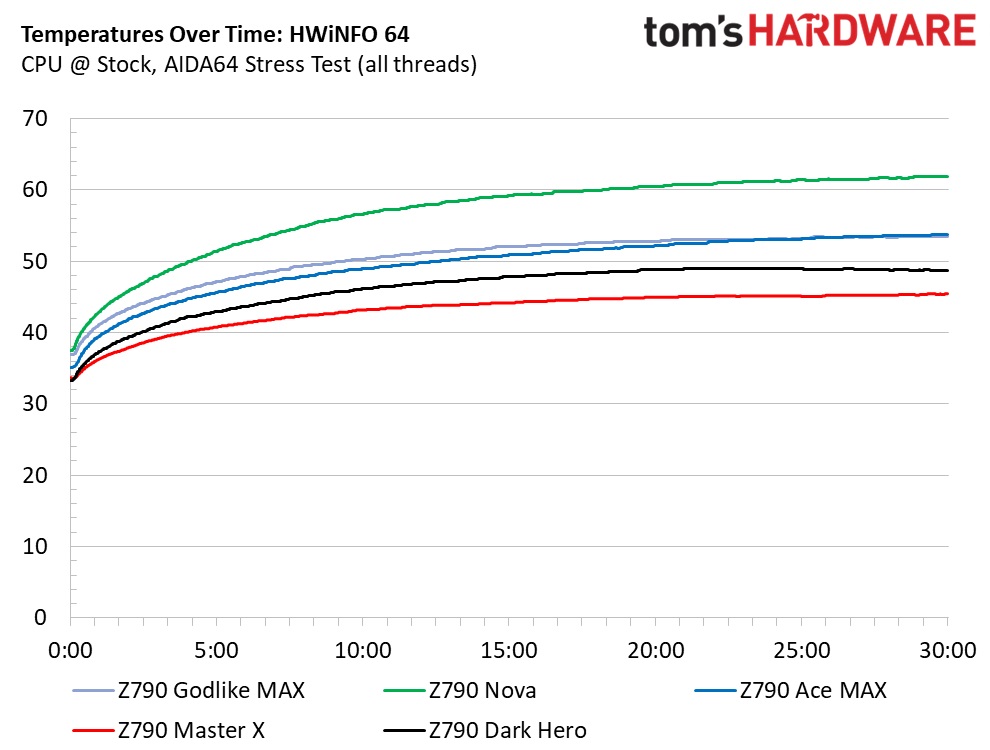
VRM temperatures on our Z790 Godlike MAX peaked just above 54 degrees Celsius. This is in the middle of the other boards, but it’sworth noting that the Godlike MAX used the most power compared to the other boards, running a steady ~320W versus others around the 300W mark or less. The “Extreme Cooling Solution” does a great job at keeping the high-end VRMs running well within specification.
Bottom Line
MSI’s MEG Z790 Godlike MAX is an iterative update to the non-MAX model. You get native 14th-gen support and Wi-Fi 7, along with a couple of aesthetic changes that improve the already premium appearance. Aside from that, it still comes with loads of storage (a whopping seven M.2 sockets and six SATA ports), flagship-caliber audio with an Amp and DAC, a slew of fast USB, including 40 Gbps Thunderbolt 4 ports, and one of the most robust power delivery solutions we’ve seen in a desktop-class board. It does offer the best of the best, and its tested performance matches the expectation.
There is competition in the flagship space from most partners. Asus offers its ROG Strix Z790 Extreme ($999.99), which has all the fixens, but isn’t updated with out-of-the-box 14th-gen support or Wi-Fi 7. Gigabyte has an updated board in the Z790 Aorus Xtreme X ($999.99) that stands up well to the Godlike. ASRock’s flagship, the Z790 Taichi ($479.99), has the hardware, including two PCIe 5.0 x4 (128 Gbps) M.2 sockets, but not quite all of the pomp and circumstance over boards that cost at least twice as much. If you want the best of the best, along with a fancy external dashboard and money is no object, the Z790 Godlike MAX is your weapon of choice. But there are similarly outfitted options that cost quite a bit less.
MORE: Best Motherboards
MORE: How To Choose A Motherboard
MORE: All Motherboard Content

Joe Shields is a staff writer at Tom’s Hardware. He reviews motherboards and PC components.
-
Alvar "Miles" Udell You forgot to list that SATA 3-8 will be disabled if you use M.2 slots 3 and 5 as well, because Intel, like AMD, does not equip consumer grade processors with enough PCIe capabilities, likely to prevent cannibalizing their higher margin HEDT parts.Reply
*PCI_E2 slot will be unavailable when installing M.2 SSD in the M2_4 slot.
**SATA3~4 will be unavailable when installing M.2 PCIe/ SATA SSD in the M2_3 slot.
***SATA5~8 will be unavailable when installing M.2 PCIe SSD in the M2_5 slot.
****SATA7~8 will be unavailable when installing M.2 SATA SSD in the M2_5 slot.
